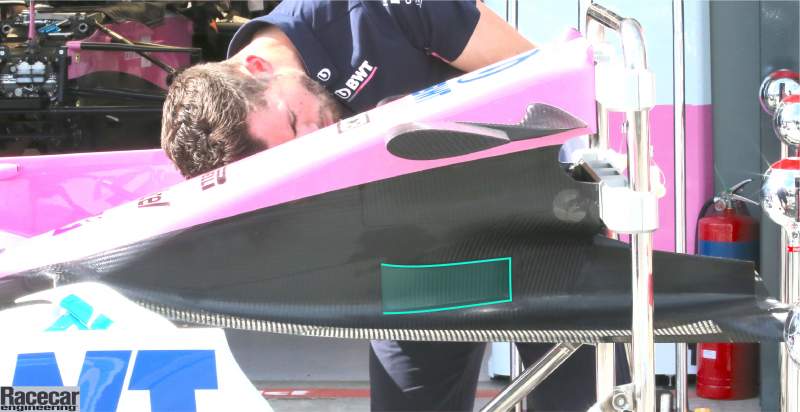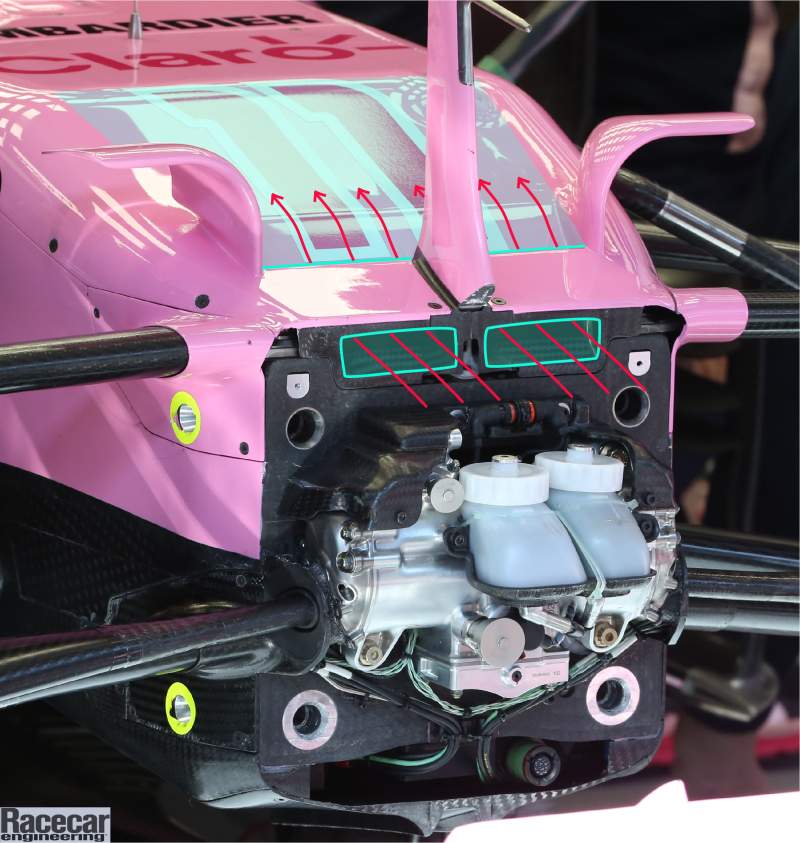Technical Analysis
The Racing Point RP20 was quickly renamed the ‘Pink Mercedes’ when it arrived at pre-season testing as it shares many similarities with last year’s Mercedes W10. Yet despite criticism, this is actually a very logical development step. Racing Point have run a Mercedes power unit since 2009 and their gearbox since 2014, along with some outboard suspension components. Therefore, Racing Point have simply converged their underlying Mercedes architecture to a more Mercedes-esque solution.
‘It shares some resemblance in some areas, like lots of cars look like other cars up and down the pitlane, I don’t think ours is particularly any different to anybody else’s in that respect,’ defends Andrew Green, Technical Director at Racing Point at pre-season testing. ‘It was clear that if we carried on the route that we were going, we were going to end up at best where we finished the championship last year and to us that just wasn’t acceptable. We decided to take a risk and that risk was basically tear up what we’ve done the past few years and start again from scratch.’
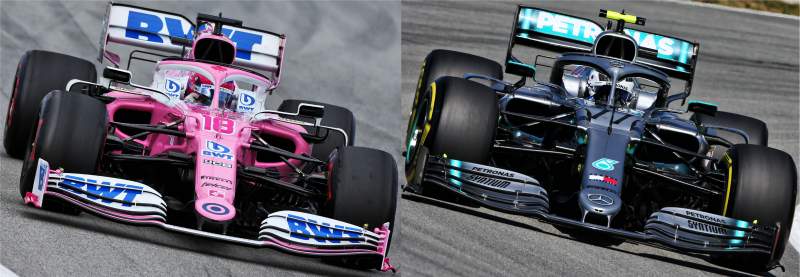
For many years, Racing Point, formerly Force India, have been developing their cars around the Red Bull high-rake philosophy. However, this can be challenging when the rear end is dictated by parts from a low-rake philosophy car, such as the Mercedes. ‘We set off on this route of reverting a lower rake car to a higher Red Bull rake type car, but eventually [the benefit] was starting to peter out,’ says Green. ‘It became increasingly difficult with a Mercedes gearbox as they are a different philosophy and it’s difficult to try and develop around a different philosophy from the underlying architecture that you have.’
Copying a concept however, is not as easy as it sounds. Green confirmed that all the developments were based on information available to everyone, i.e. high res imagery and spy shots, which a trained eye can gain a lot of intel from. ‘Copying something means nothing unless you understand what you’re doing, otherwise it doesn’t work,’ explains Green. ‘That’s why it was such a big risk because we had to put a lot of faith into the aerodynamics team and say “go and understand what’s happening and let’s see if we can replicate it”,’ continues Green. ‘My question would really be why hasn’t anyone else done this before? When we look back on it, I think crikey this is something that maybe we should have done earlier but unfortunately, we didn’t have the resources earlier or the funding to support this sort of project.’
Front Wing
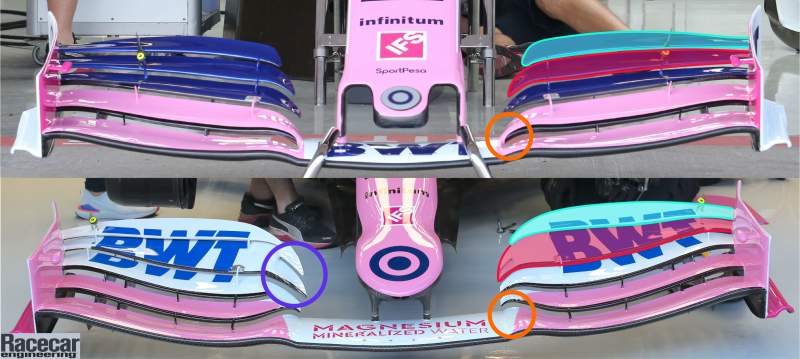
The RP20’s front wing closely follows that of the Mercedes W10. Overall, the wing has a much deeper mid-section, with the upper elements narrowing more towards the nose (blue). The 2nd upper element in particular is much larger than last year (red) and also features the double winglet tip (purple) on the inboard section. The mounting of the lower element has also changed and is now no longer connected to the main plane at the inboard section (orange).
Front wing endplate
The front wing endplate has also seen numerous changes. The trailing edge is now curved (red) with the vortex generator extended to the full length of the endplate (blue). A winglet has also been added to the rear of the vortex generator (purple), with its curved shape likely helping the outwashing effect. The front wing endplate has seen a minor rule change for 2020. In an attempt to reduce the likelihood of tyre damage, the leading 50mm must now be made purely of carbon fibre. Any metal fasteners or inserts used for attaching the endplate to the wing profiles is now only allowed 30mm rearwards from the leading edge.
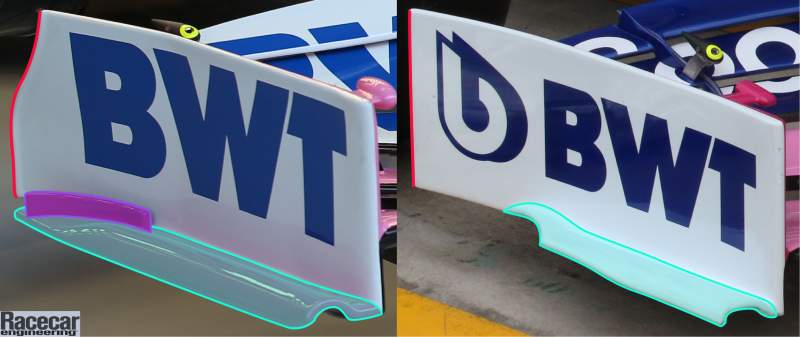
Nose
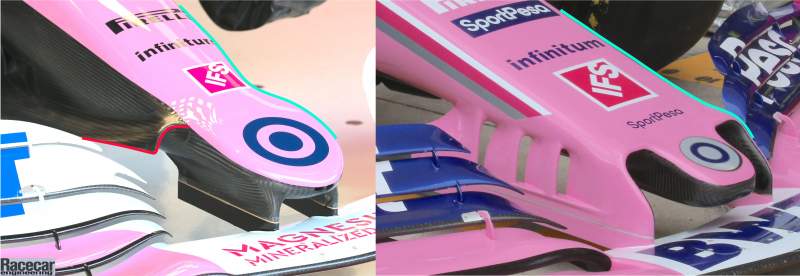
The RP20 features a narrower, more domed shaped nose which widens at the front (blue). The front wing pillars are now much more subtle, extending vertically from the front of the nose, compared to the large pillars of last year’s car which also incorporated several turning vane-shaped structures. A ‘cape’ has also been added (red), which extends rearwards towards the assembly of turning vanes.
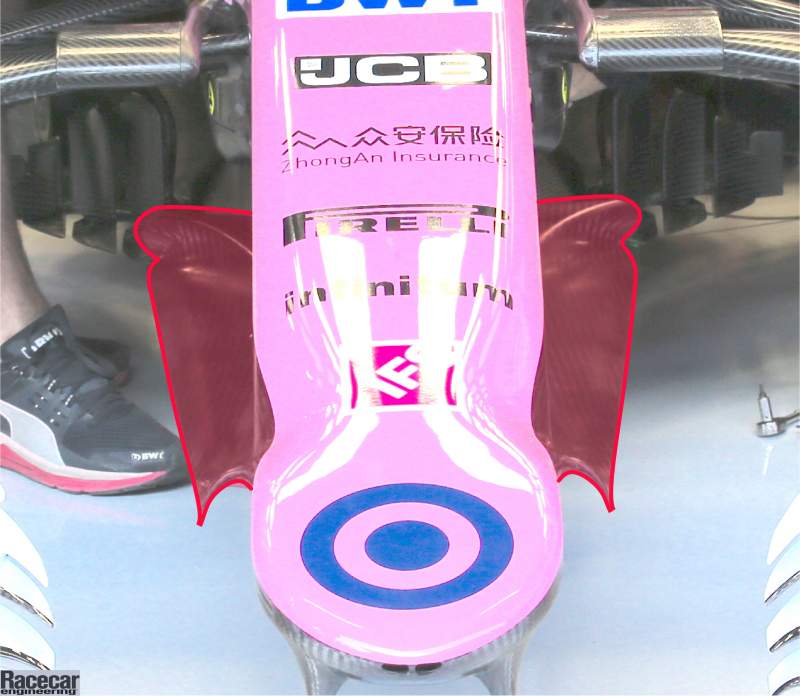
The purpose of the S-duct is to take a portion of the turbulent air surrounding the front wing, feed it through the nose and eject it towards the cockpit area, which is already an area of turbulence. This minimises the turbulent flow continuing downstream and affecting the performance of the underfloor. The main inlet for the S-duct could be that highlighted in blue below.
